The show is organized in collaboration with the Estate of Ian Hamilton Finlay and is curated by his long time associate Pia Simig.
Ian Hamilton Finlay was a poet, philosopher, gardener and artist. His work rose to fame in the early 1960s as one of the leading artists of concrete poetry, a movement whereby layout and typography contribute to the overall effect of poetry, which served as a key influence to contemporary conceptual artists around the world.
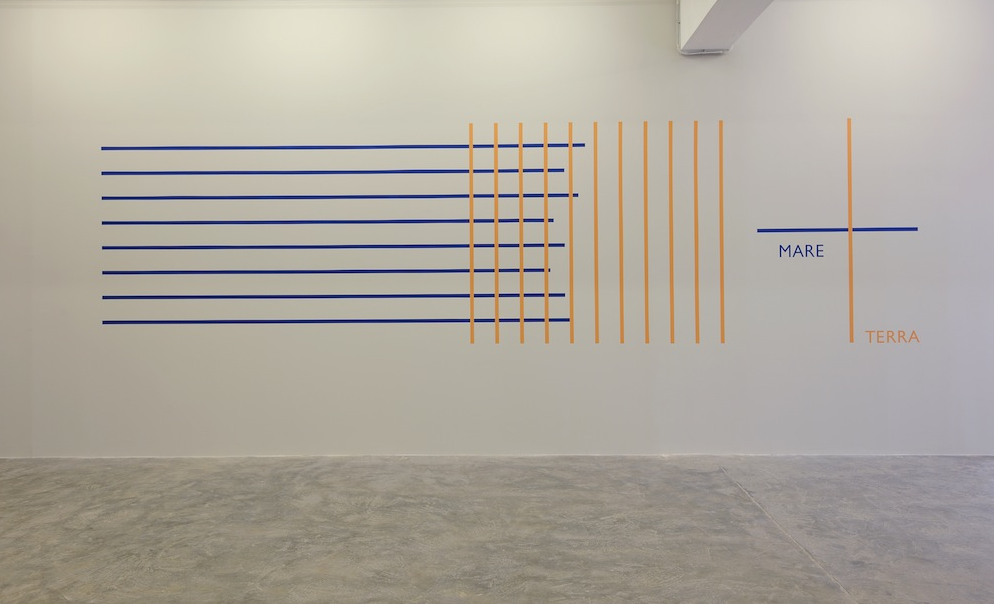
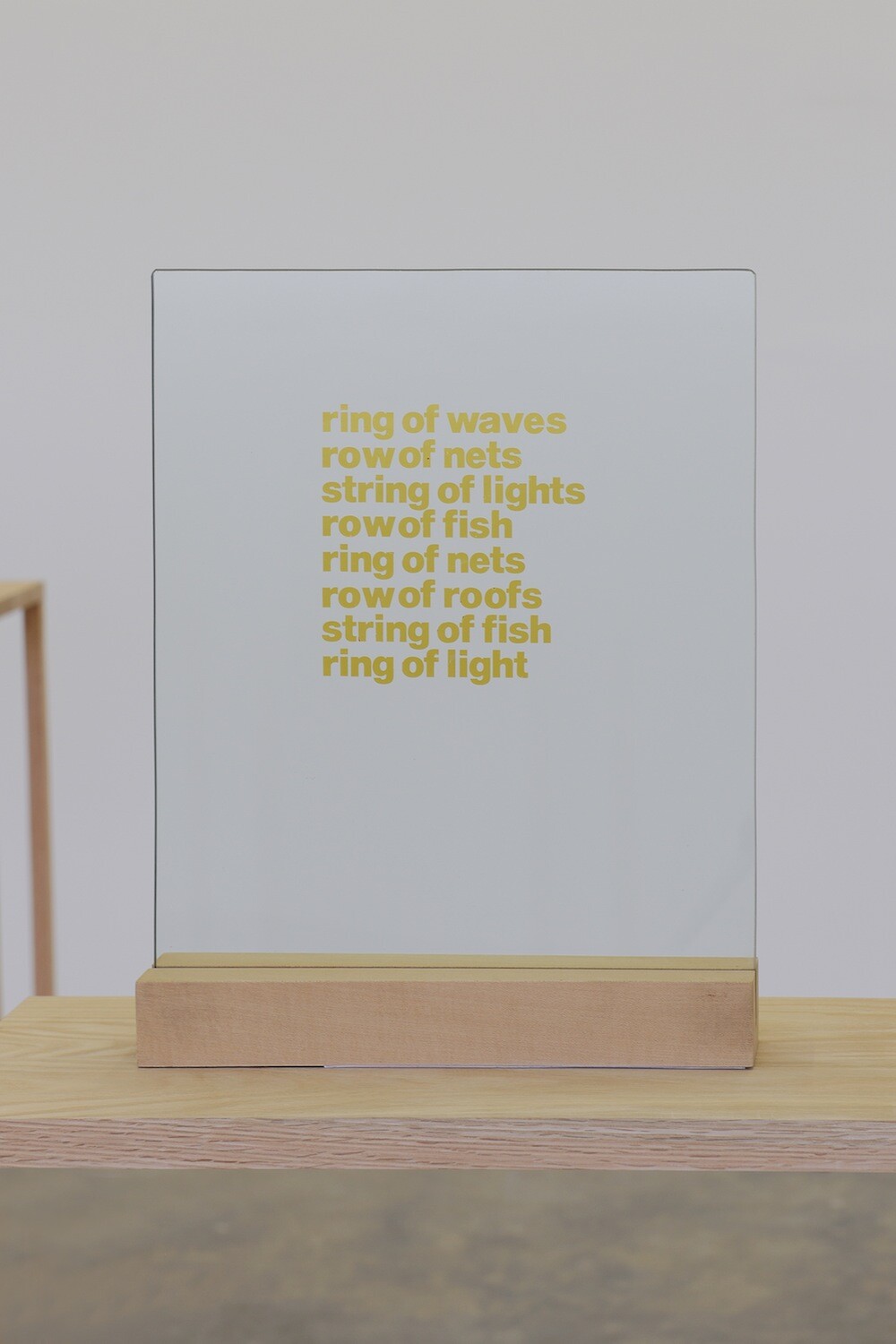
glass with gold inscription, wooden stand, 57.5 × 17.5 × 6 cm
In 1966, he moved with his wife to Stonypath, an isolated moorland cottage in the Pentland Hills south of Edinburgh. Here he began to inscribe his words and poetry on to stone and other materials within a natural environment he cultivated, thus creating his most notable work, his garden, Little Sparta.
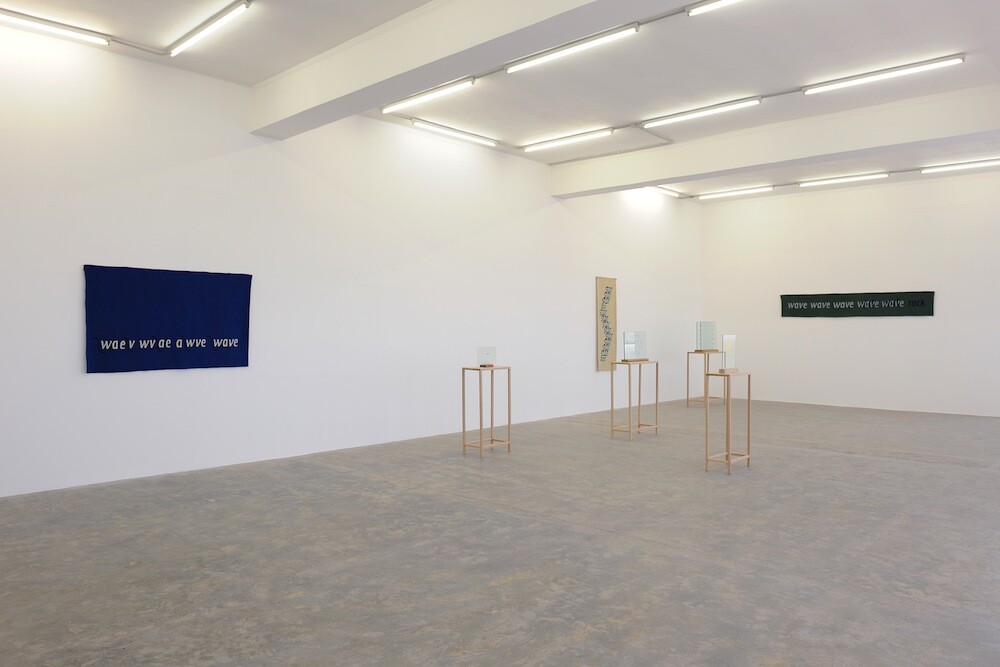
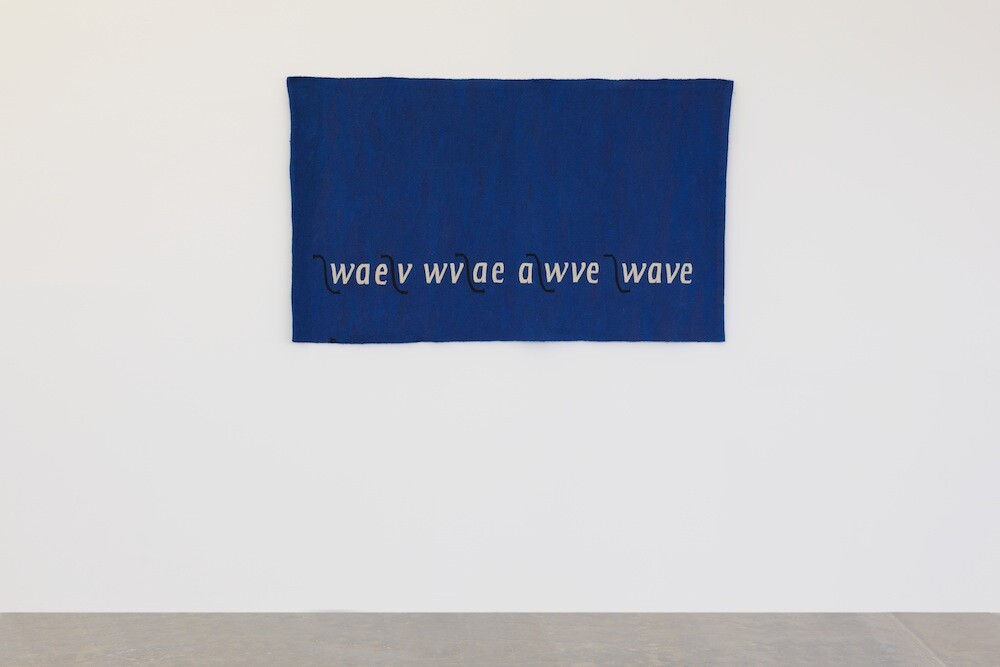
tapestry, wool, 99 × 165 cm
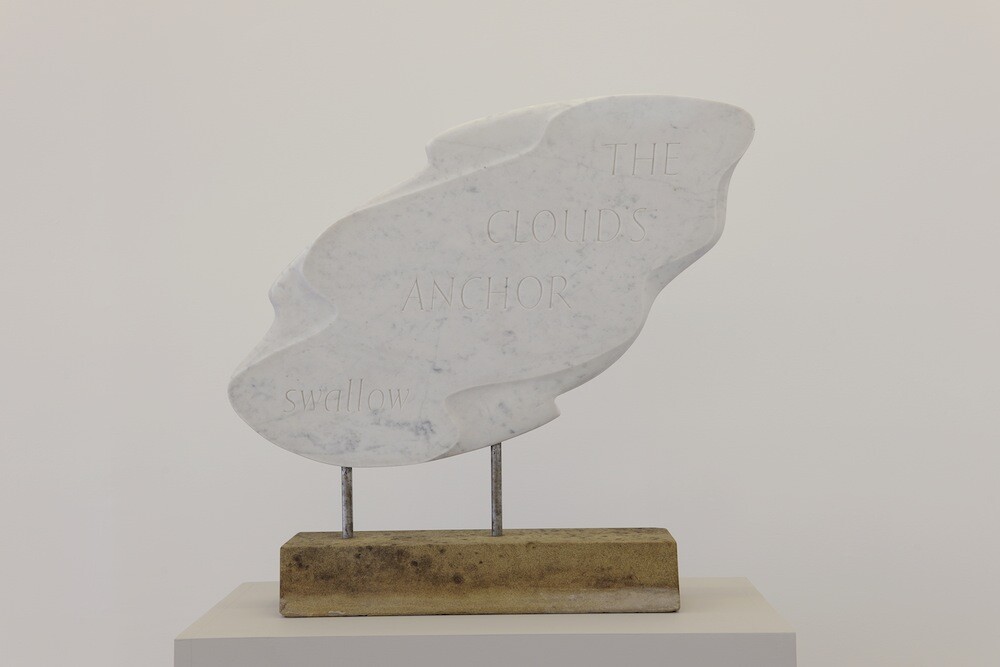
marble, metal, 60 × 59 × 11 cm
His work is distinguished for a number of periodic subjects, such as fishing and maritime themes, an interest in the origins of Western thinking, Neo-classicism, the pre-Socratic philosophers (especially Heraclitus) and their vocabulary, all with a constant reference to natural elements.
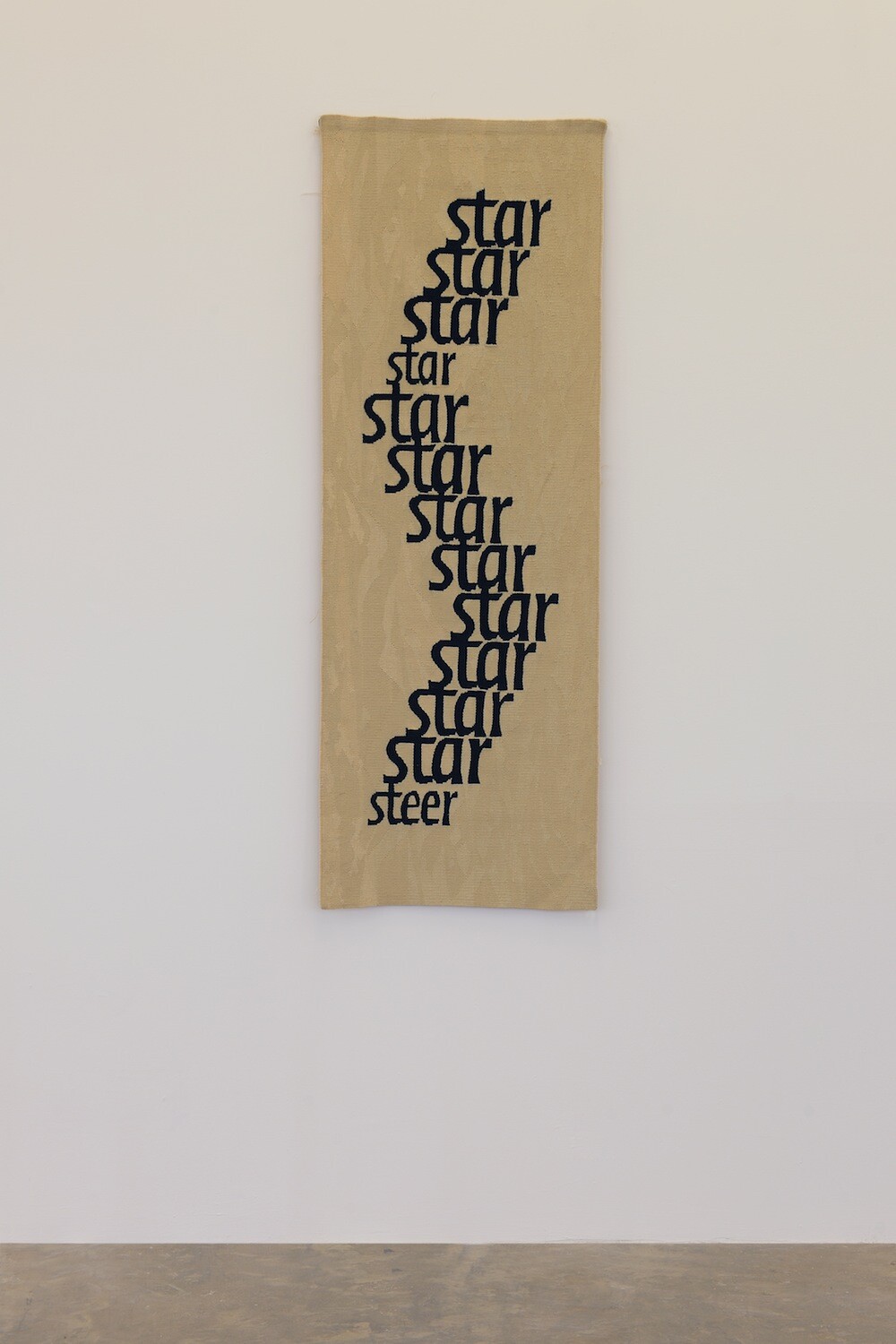
tapestry, wool, 163 × 38 cm
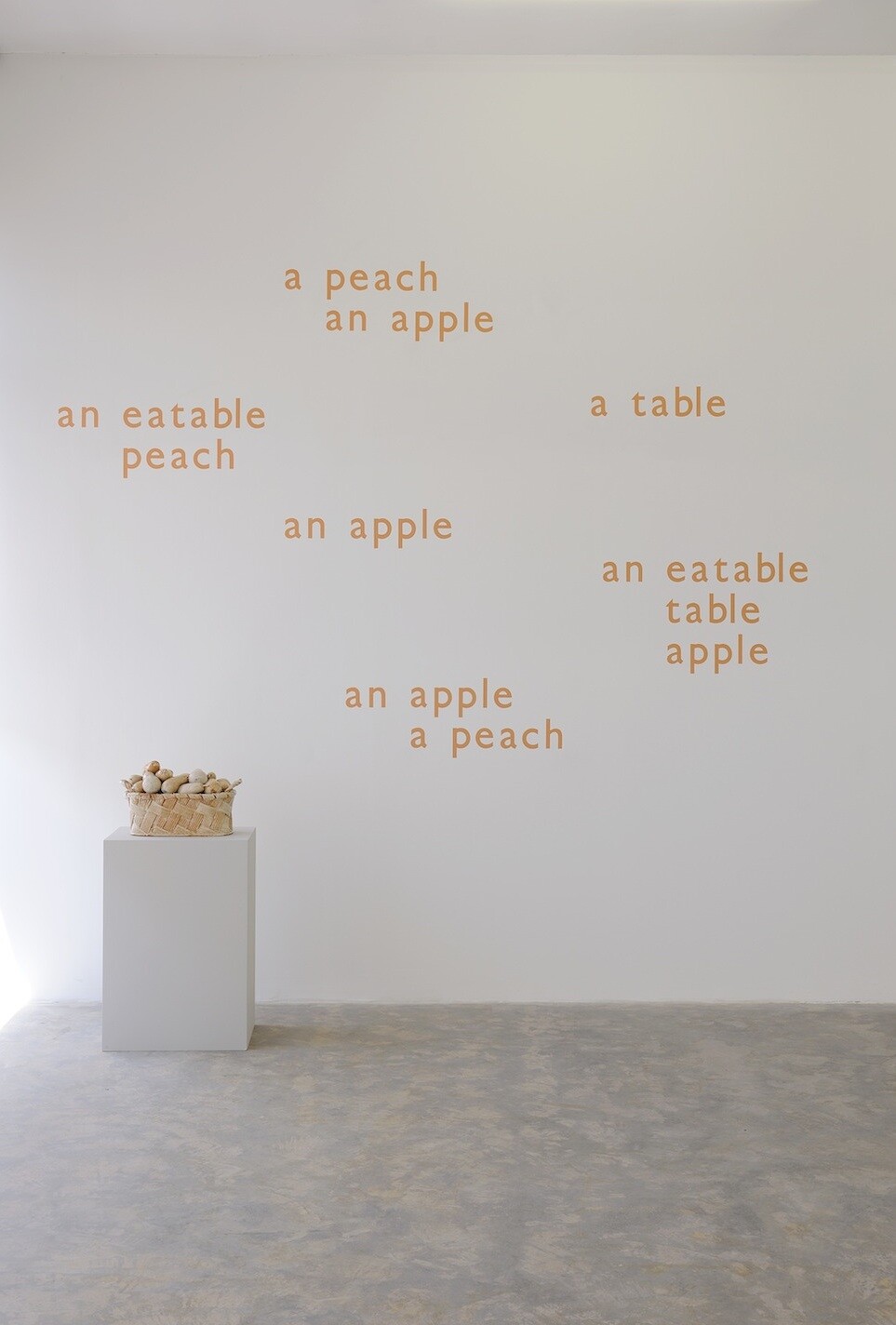
In addition to philosophical and natural aspects, the work has strong historical and political allusions, whereby Finlay revisits the French Revolution and the two World Wars.
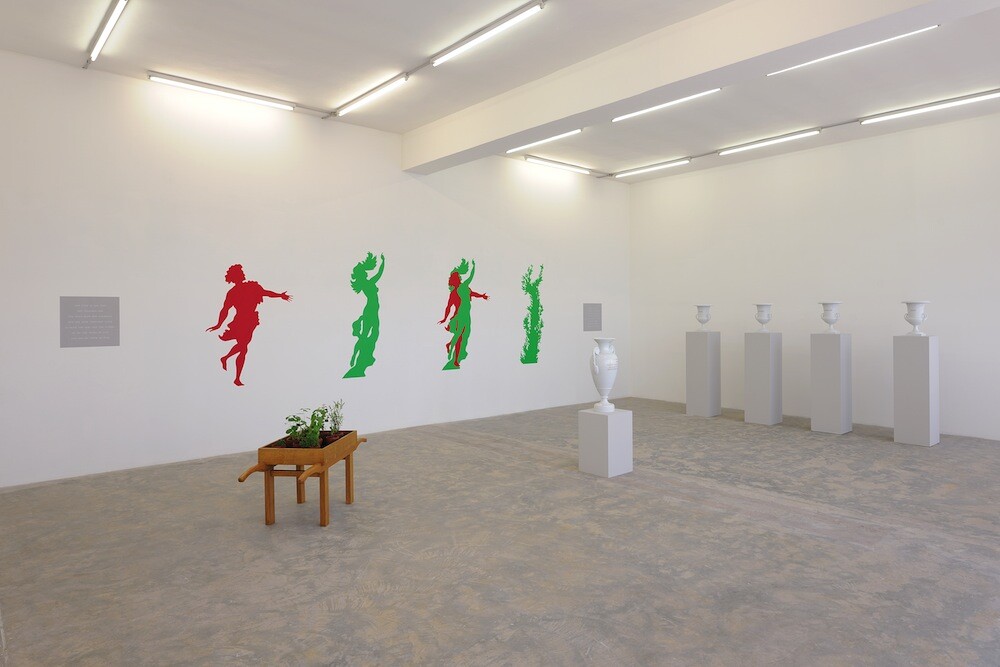
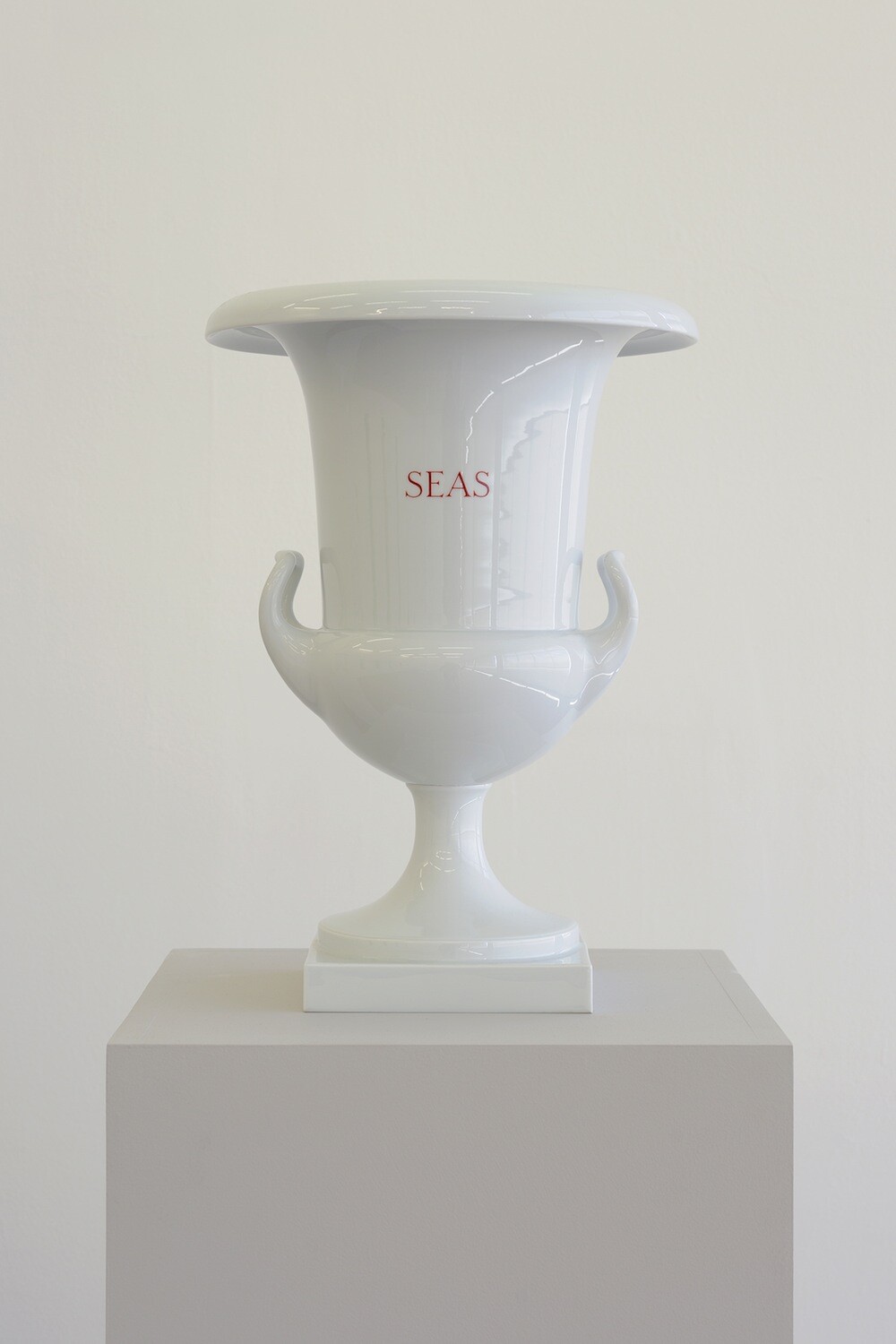
porecelain vase, KPM, 70 × 35 cm, unique
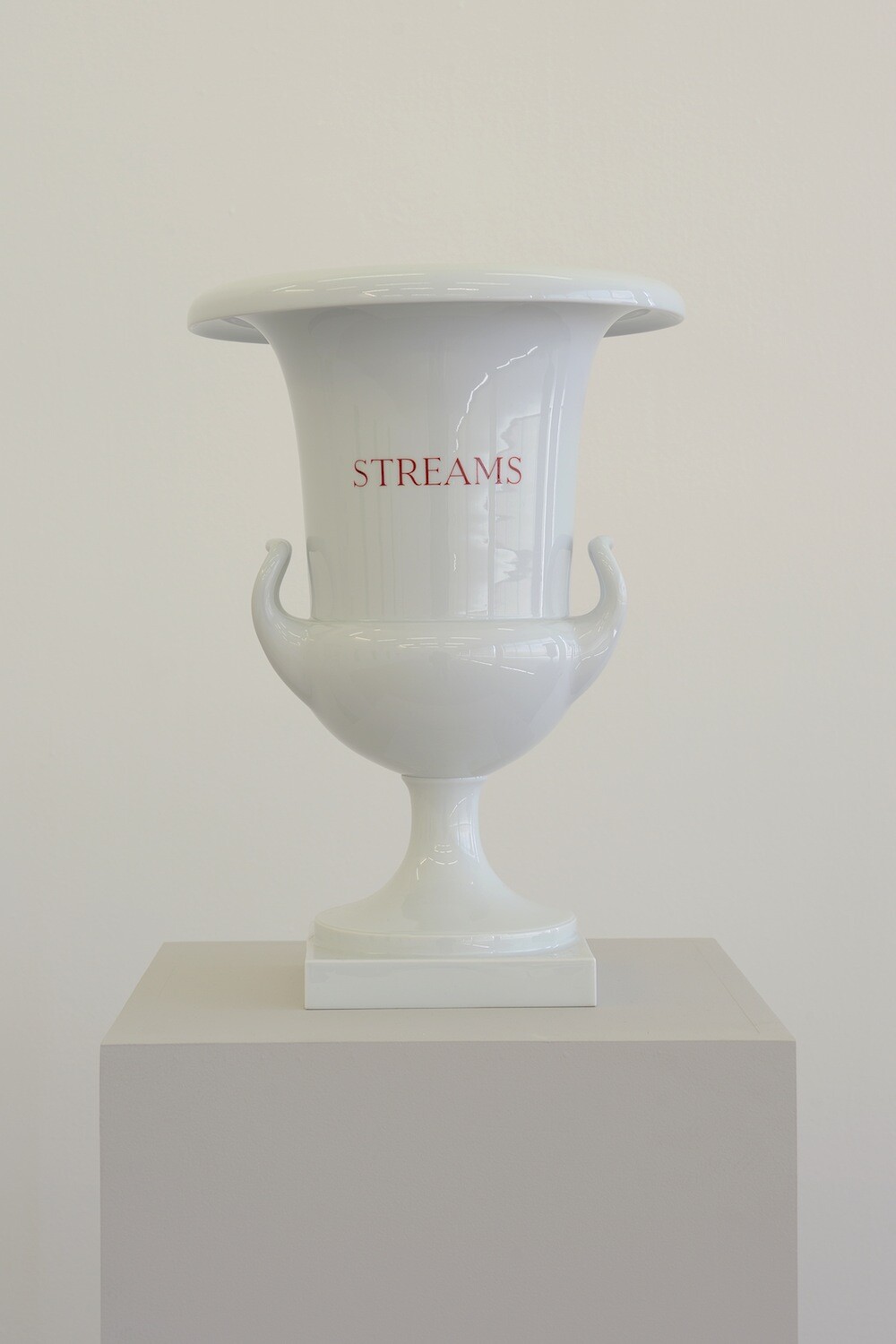
porcelain vase, KPM, 70 × 35 cm, unique
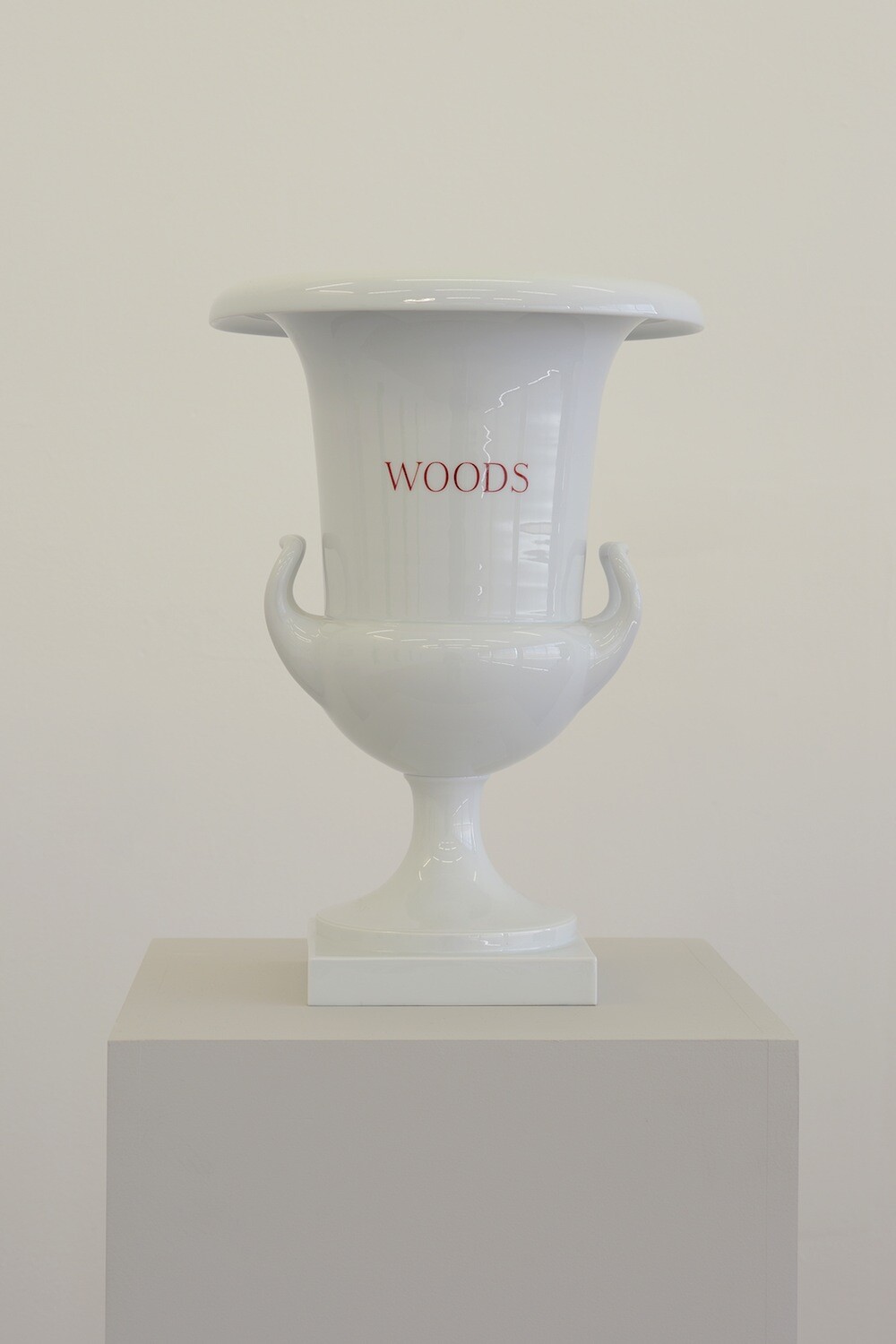
porcelain vase, KPM, 70 × 35 cm, unique
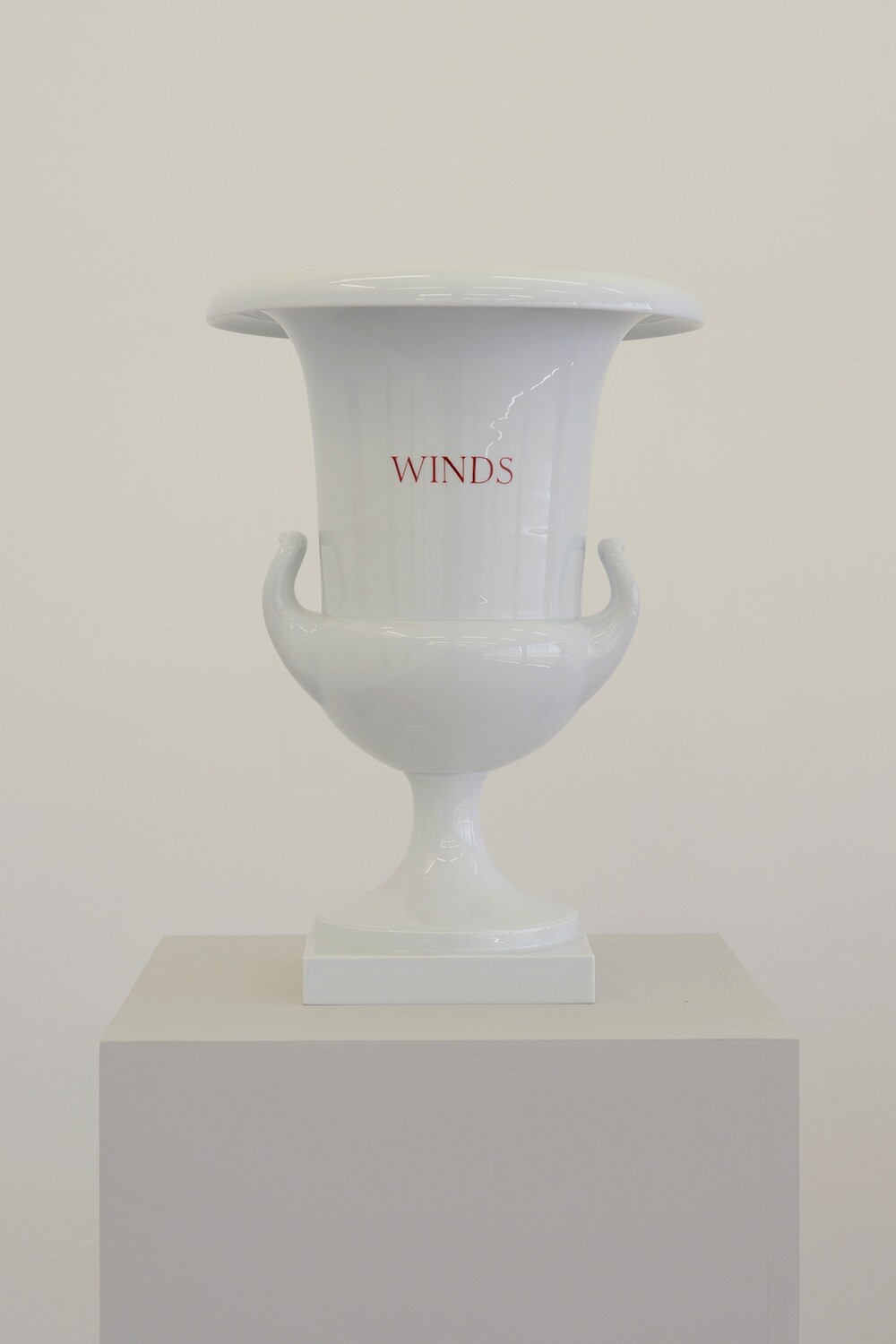
porcelain vase, KPM, 70 × 35 cm, unique
In his first exhibition in the Middle East, the show includes tapestries, neon installations, engraved poems on glass, sculptures and printed works from the 1960s to 2006, as well as wall paintings installed by his long time collaborator, Les Edge.
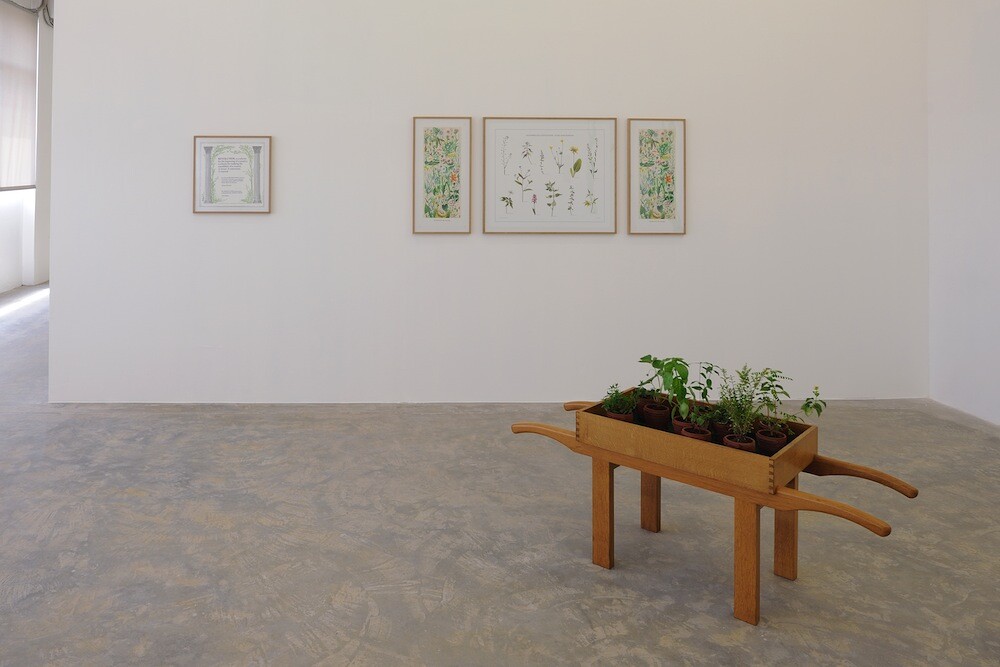

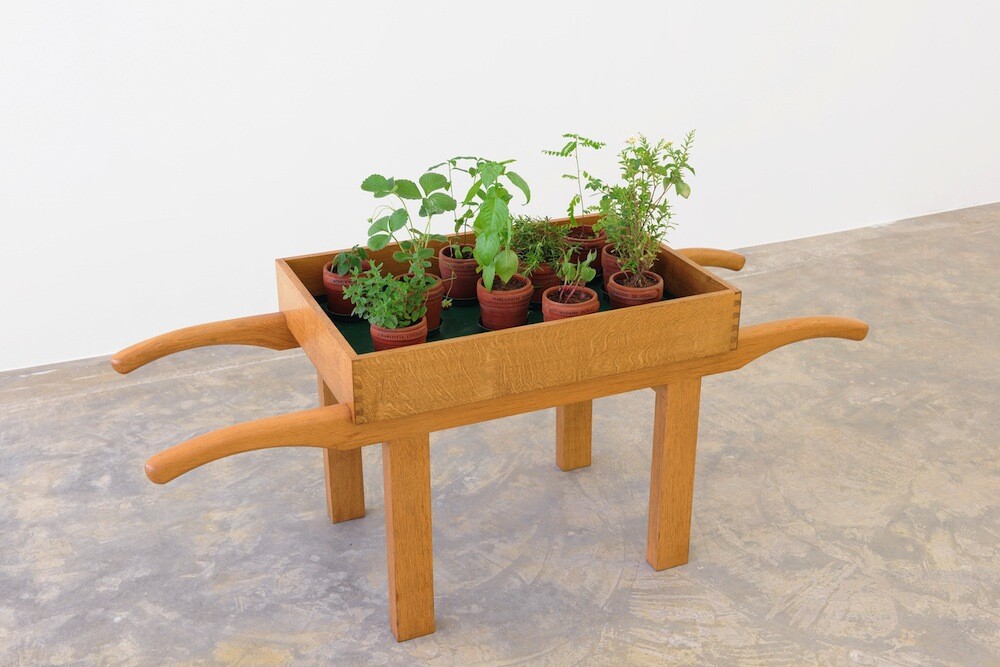
flower stand, 10 ceramic wildflower pots, 140 × 150.5 × 60 cm
Finlay’s poetic work with its focus on the language and beauty of the letter is particularly relevant to our region, where the tradition of calligraphy and the rich history of the written word are integral to Middle Eastern artistic canons. The work highlights the letter, making it the subject, just as the Arabic calligraphers have done for centuries.


The show also embraces all the aforementioned themes of Finlay’s work. Yet it focuses on the delicate balance between nature and culture, and terror and virtue. This constant struggle for a balance of two opposites sheds light on the current political, social, and environmental turmoil, thus showing the universality of Finlay’s poetry and work.
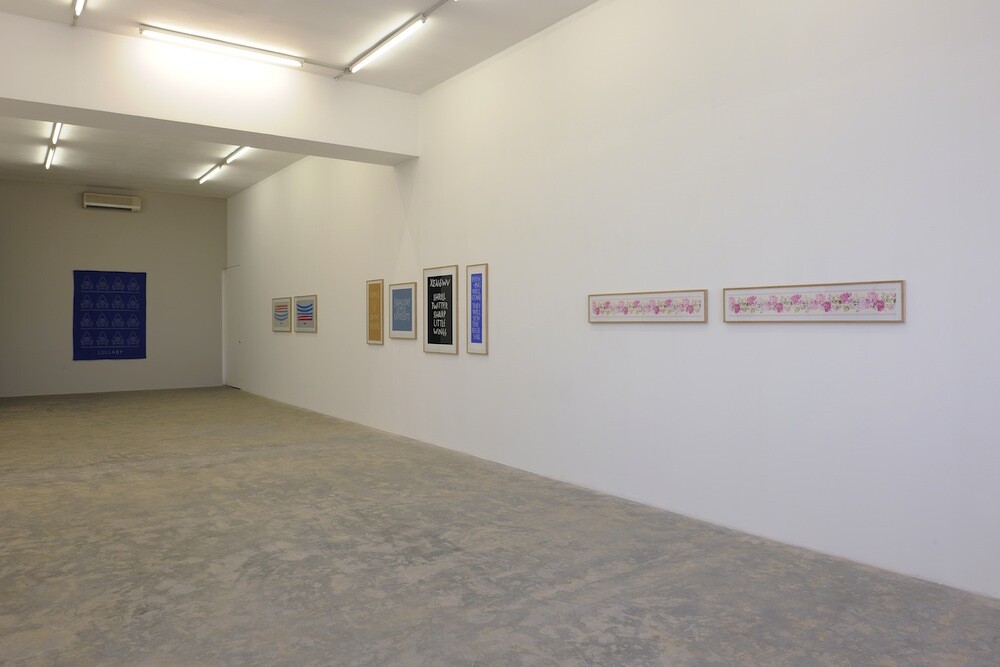
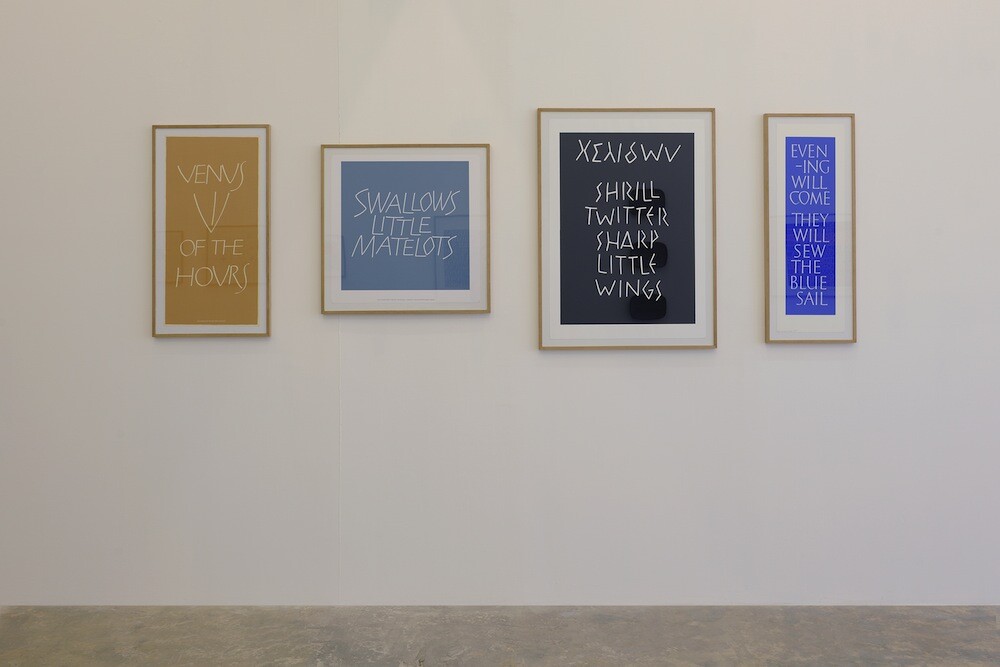
A prominent work illustrating these dualities is the wall painting ‘Apollo and Daphne’, a wall painting based on the works of Gian Lorenzo Bernini, an Italian baroque sculptor and architect. It tells the story of Apollo who chases Daphne. The beautiful nymph begs her father, the river god Peneus, to help her escape and is transformed into a bay laurel tree, a disguise that eluded her from her captor.
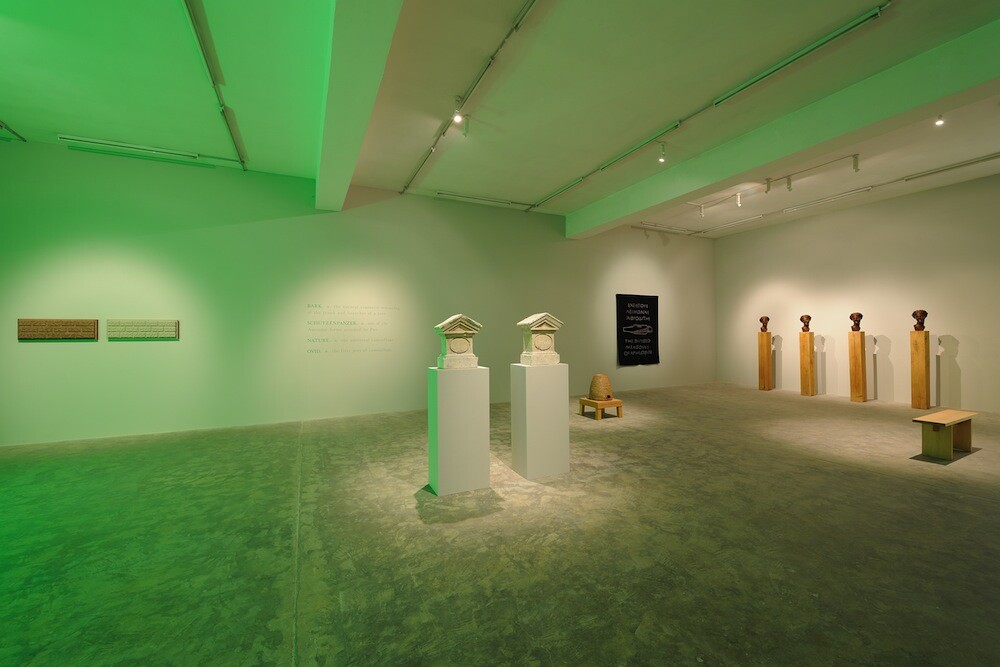

blanket, wool, cashmere, 139 × 173.5 cm
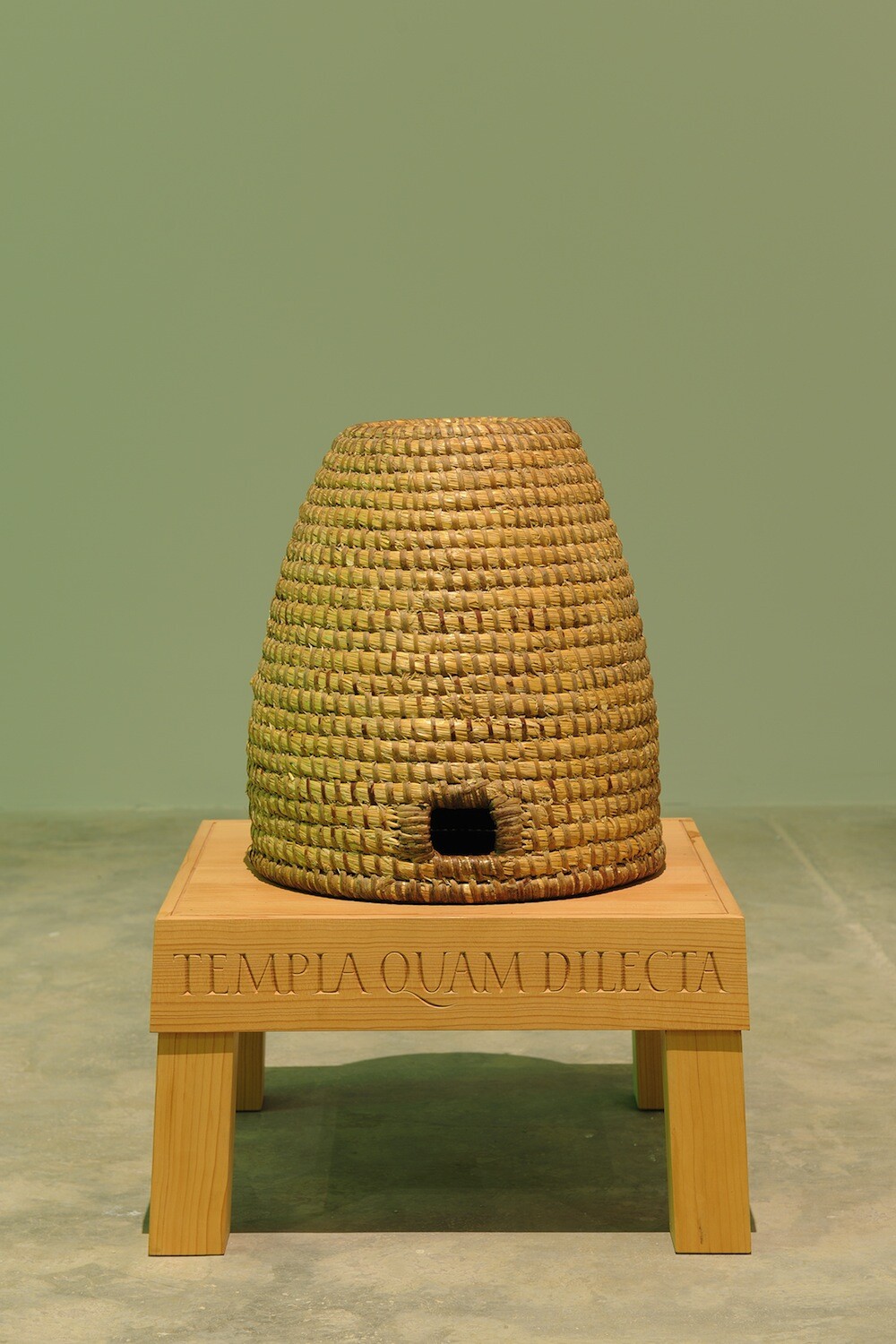
beehive, wood, straw, c. 50 × 36 cm (beehive over 100 years old); 50 × 50 × 30 cm stand, unique
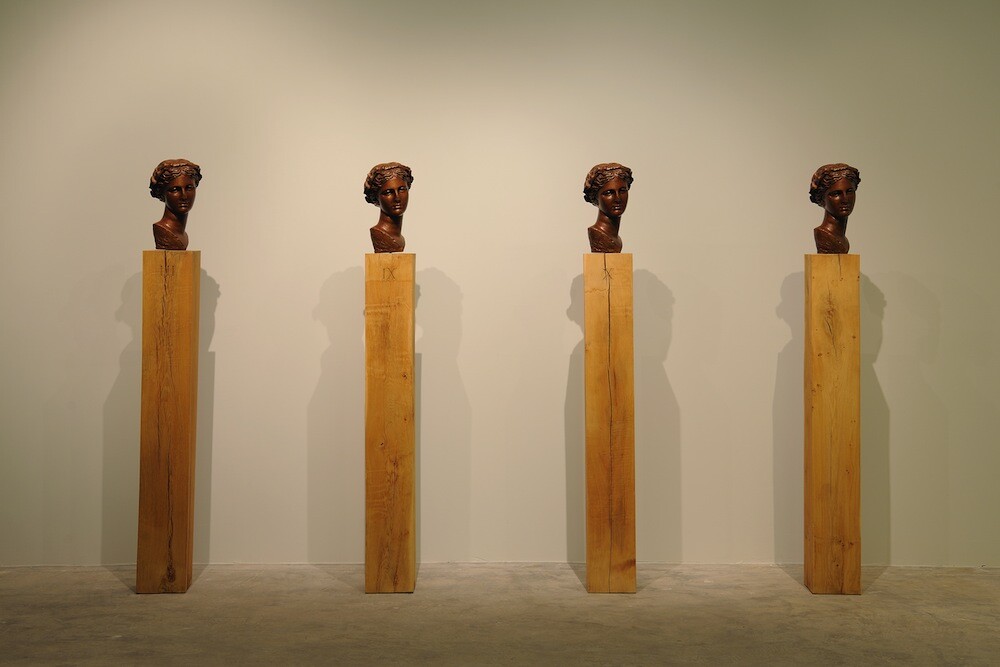
The work is a commentary on the French Revolution. Finlay often linked Apollo to the French revolutionary, Louis Antoine de Saint-Just. However the work not only refers to these mythical and historical figures, but also any individual who chases the ideal of a virtuous republic with excessive desire and rigor. The aggression of the pursuit loses the ideal, only for it to return to nature.
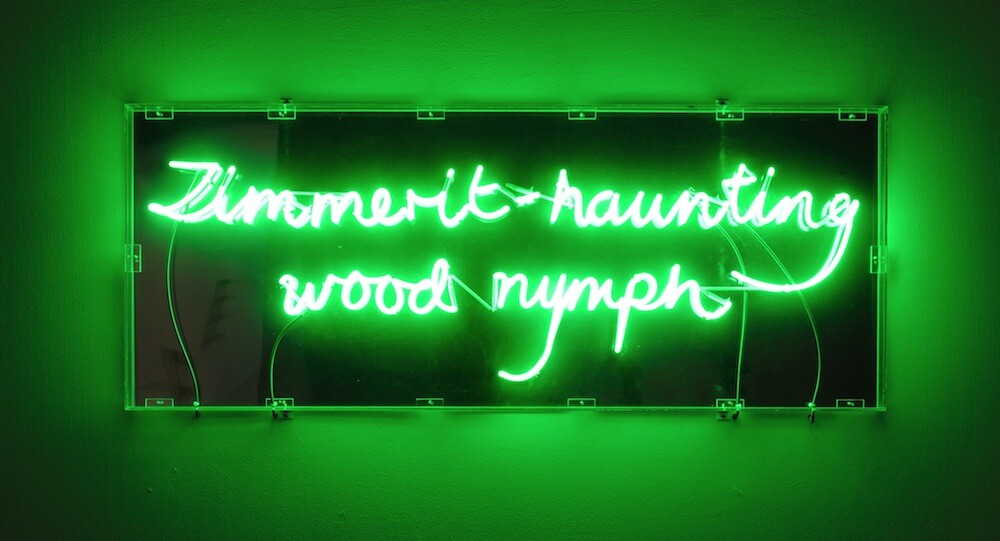
neon, 61 × 152 × 7 cm, unique

stone (19th century), inscriptions, 52.1 × 41 × 25.1 cm, unique, (front)
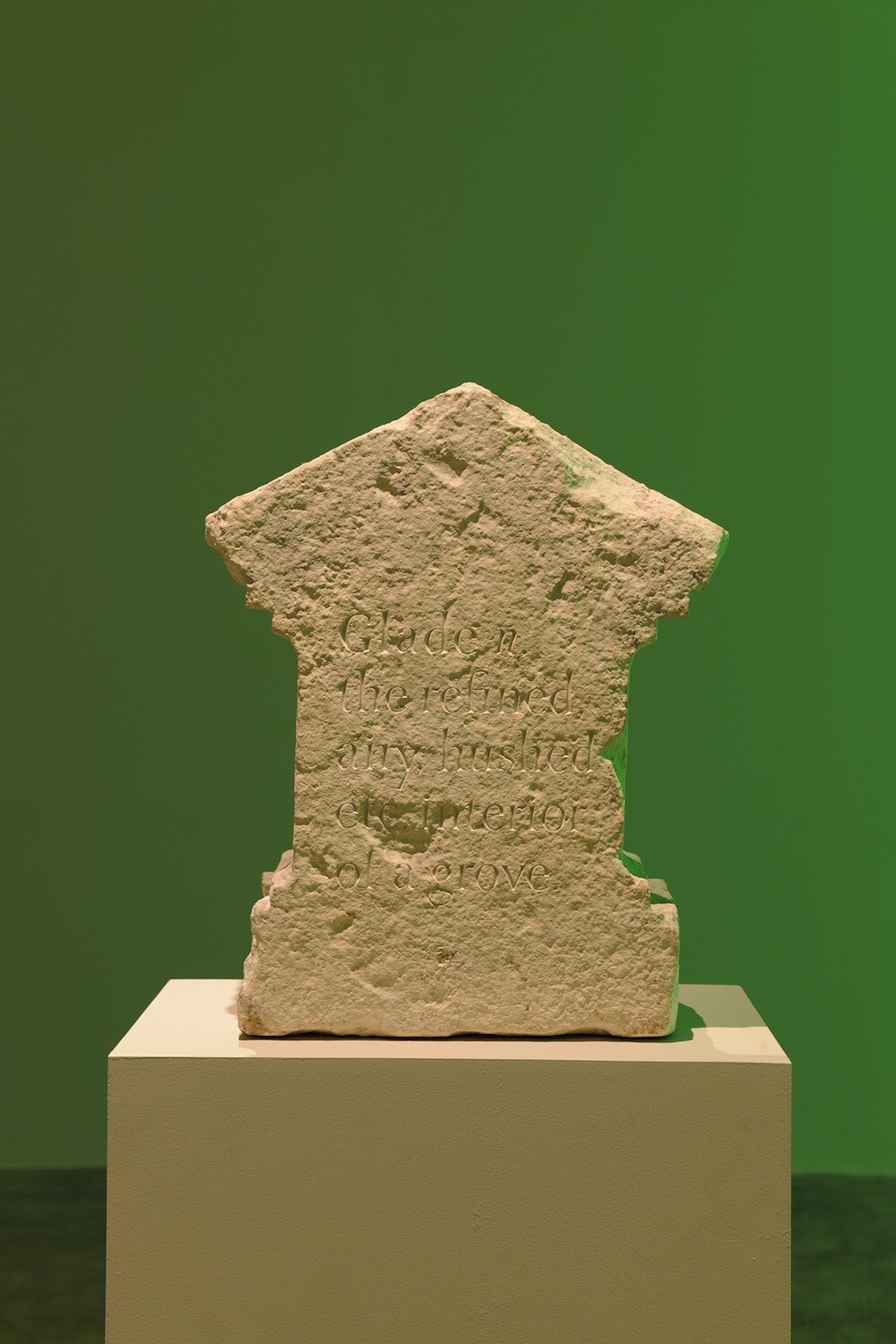
stone (19th century), inscriptions, 52.1 × 41 × 25.1 cm, unique, (back)

stone (19th century), inscription, 52.1 × 41 × 25.1 cm, unique, (front)

stone (19th century), inscription, 52.1 × 41 × 25.1 cm, unique, (back)
Ian Hamilton Finlay (*Nassau, Bahamas, 1925, †Pentland Hills, Scotland, 2006). As one of Scotland’s most renowned artists, poets, and philosophers, his work has been exhibited in major museums and spaces such as the Gallery of Modern Art, Glasgow (2013); Tate Britain (2012); Deichtorhalle Hamburg (1995); Philadelphia Museum of Art (1991); Serpentine Gallery, London (1977), and within group exhibitions at Tate Modern (2008); Centre Pompidou, Paris (2005); The New Museum, New York (1991); Lehnbachhaus, Munich (1993); and Documenta 8, Kassel (1987). He has published his printed work under Wild Hawthorn Press, a publishing house he founded in 1961. Sfeir-Semler Gallery has been representing Finlay since 1991, showing his work in several exhibitions in Germany.

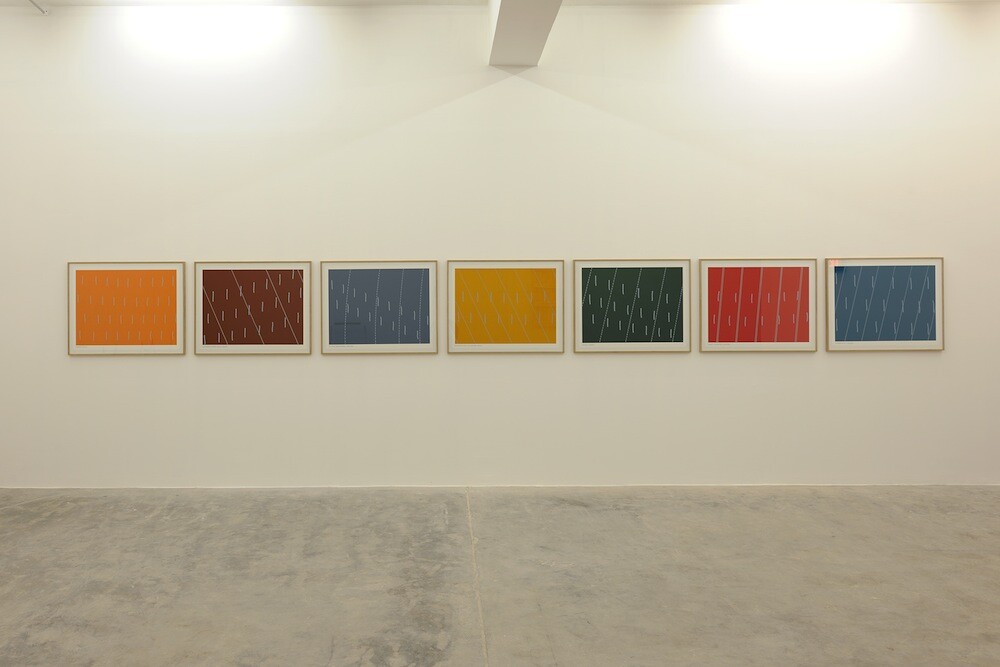
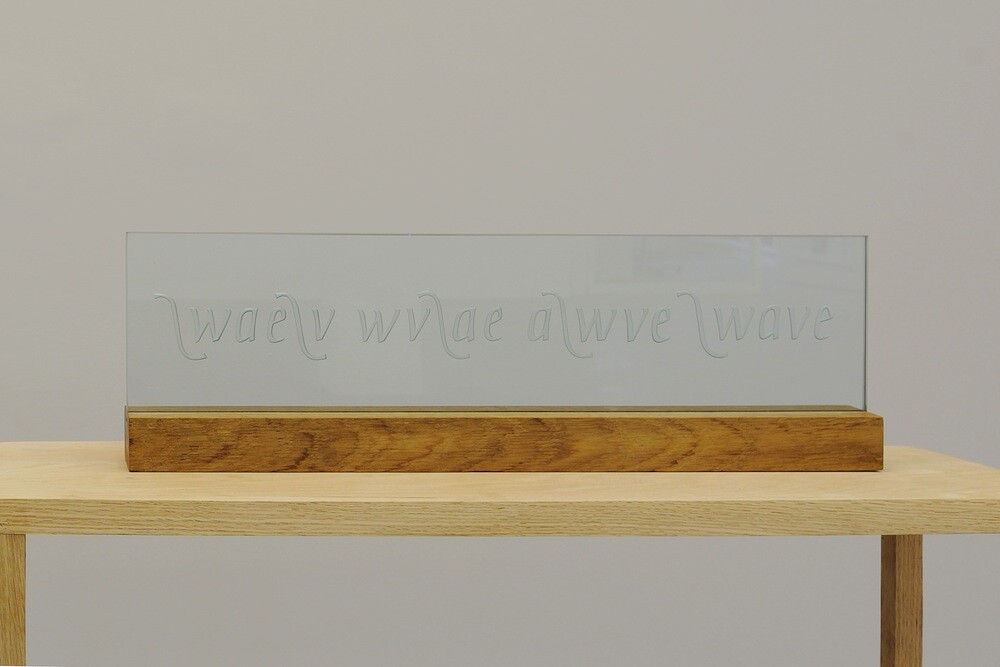
engraved glass, wood, 18 × 57.4 × 5.8 cm